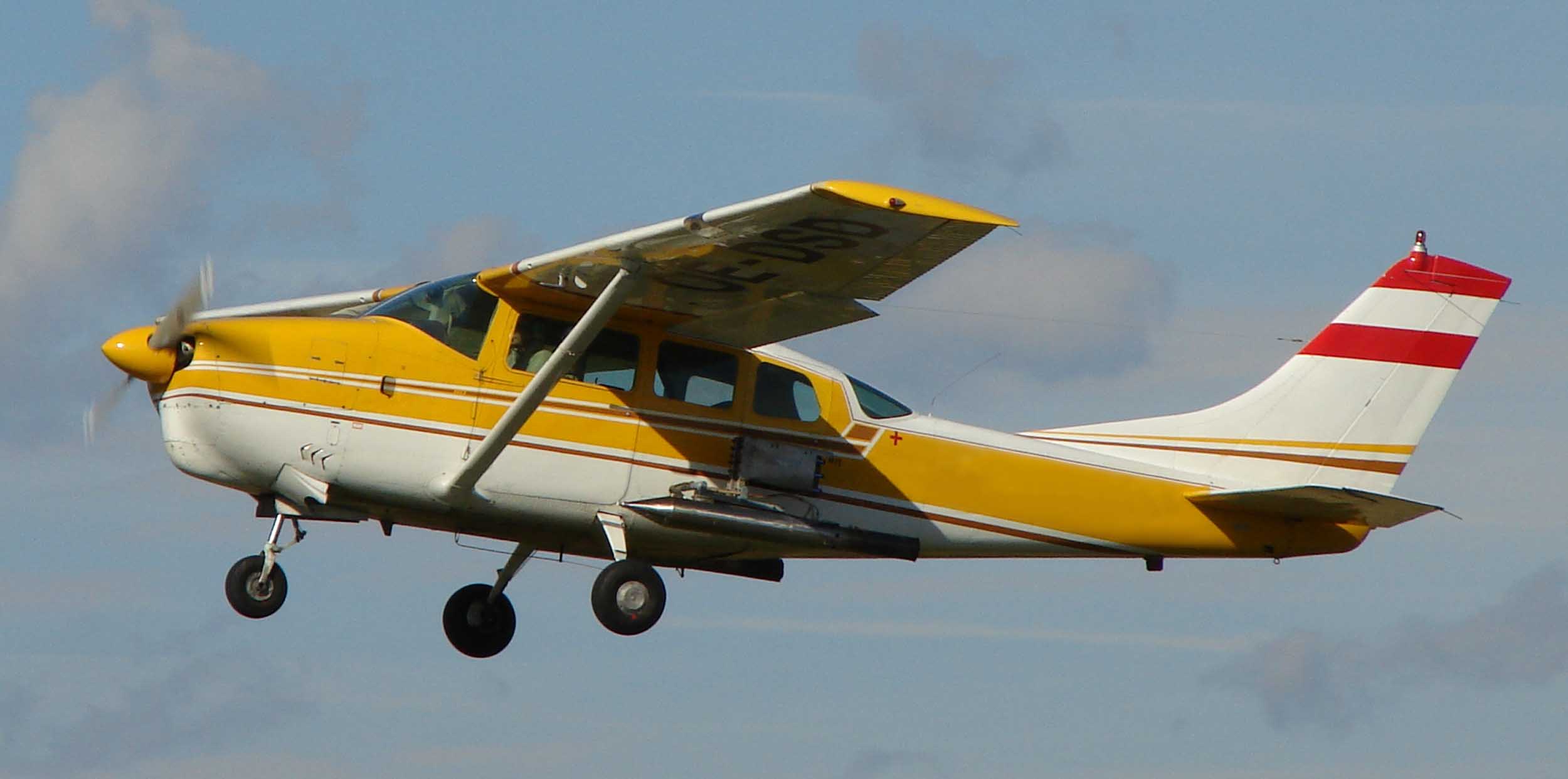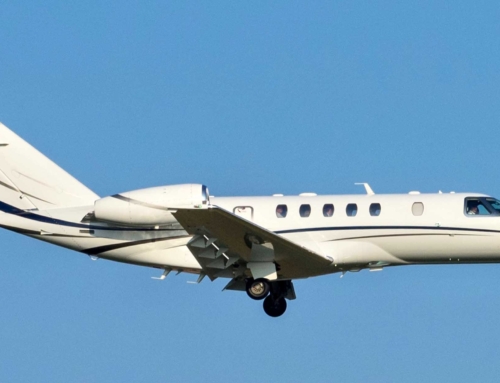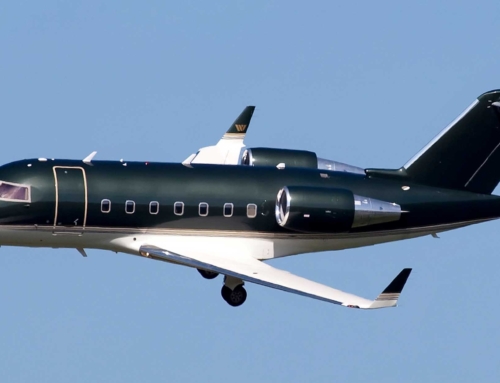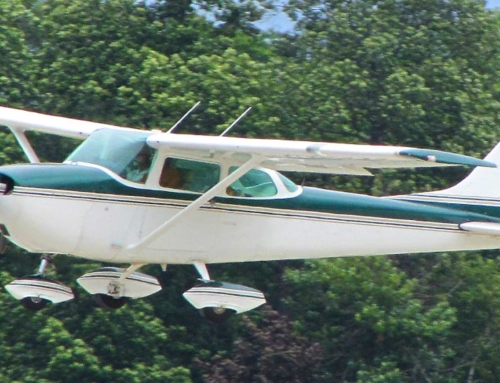Before creating his initial aircraft, Cessna’s founder Clyde V. Cessna made his first appearance at an airshow in 1911. It was there that he quickly became interested in designing and producing aircraft. With experience as a mechanic and auto salesman, Clyde put together his plane with a kit from Queens Airplane Company in the Bronx. Over time, Clyde became a pretty good pilot.
In 1916, Clyde got the opportunity to use a space for his aircraft dreams rent-free on one condition – any new aircraft he made had to have the name of a particular car model called “Jones-Six” painted on the underside of its wings.
In 1917, he built the Comet. However, World War I impacted his vision, halting sales and production altogether as most critical parts and supplies became essential for war use. After coming to terms with his failed venture, he returned to farming.
Years later, in 1925, wealthy businessmen Walter Beech and Lloyd Stearman offered Cessna an opportunity to build and produce more aircraft. After teaming up, they created Travel Air Manufacturing Company with Cessna as its president. But Cessna didn’t enjoy his role as president and missed being heavily involved with aircraft design and production. So two years later, Cessna teamed up with Victor Roos to create the Cessna-Roos Company. His partner, Roos, left the business shortly after for another job.
Cessna had successful sales through the business’s A and D series, but tough times were still ahead. After private aircraft sales fell to an all-time low in 1931, Cessna closed its company again.
By 1933, Cessna’s nephew Dwane Wallace had obtained his degree in Aeronautical Engineering from Wichita University. He eventually worked for Beech Aircraft Company, where he convinced executives to allow his uncle to reopen his shop and continue making aircraft. At the time, Beech occupied a small section of Cessna’s former factory.
After Cessna’s retirement in 1936, he allowed the sale of all of his shares to his nephews, Dwane and Dwight Wallace. Under the Wallace Brothers’ leadership, Cessna designed and built its first twin-engine aircraft in 1938. Before World War II started, government demands from the U.S. and Canada poured in for aircraft to be used for military training. From there, Cessna’s business expanded quickly, embracing its newfound success.
Introducing The Centurion
The first Centurion flew in January 1957 as a 182 with retractable landing gear and a straight vertical tail. This variation went through four airframe shapes before deciding on a final design. Among its list of firsts as a single-engine aircraft, it is the first to offer factory-installed deicing and is the first single approved for flight in icy conditions. It is also the first single offered with factory-installed weather radar.
What’s unique about the Centurion is its ability to remain stable, allowing pilots to fly straighter without much pushback. Its turbocharged version offers a better climb and cruise performance. Those within the aviation industry often refer to this aircraft simply as the 210.
-
Country of Origin: America
Cessna Turbo Centurion T210 F-R
Below are the average statistics for Cessna’s Centurion T210F and T210R models. Find more information on Cessna’s Cardinal series by joining VREF Online.
Cessna Turbo Centurion T210F (1966) Statistics
|
200 kts Maximum Speed |
725 nm Maximum Range |
6 Maximum Occupants |
1966-1986 Range Of Years Manufactured |
|
8,463 Total Aircraft Build |
Current Operational Aircraft |
1,335 lbs Useful Load |
Average Sale Value |
|
Average Days On Market For Sale |
VREF Demand Rating |
Cessna Turbo Centurion T210R (1985) Statistics
|
224 kts Maximum Speed |
715 nm Maximum Range |
6 Maximum Occupants |
1966-1986 Range Of Years Manufactured |
|
8,463 Total Aircraft Build |
Current Operational Aircraft |
1,780 lbs Useful Load |
Average Sale Value |
|
Average Days On Market For Sale |
VREF Demand Rating |
Operational Resources
Operations Manual
Maintenance Document
Local Resources
- Textron Aviation Inc. (Domestic and International Service Centers)
- Cessna Flyer Association
Manufacturer
Insurance
- Avemco
- AOPA Insurance
- BWI Aviation Insurance
- Falcon Aviation Insurance
- Travers Aviation Insurance
- USAA Aircraft Insurance For Pilots
Cessna Turbo Centurion T210 F-R Details
The following is information about the latest Cessna Centurion T210R (1986).
Interior
Cessna’s initial marketing advertisements say the T210R is faster than ever and comes with many options like air conditioning, AM/FM radio, and deluxe leather seats. This model also came with two avionic options: King Silver Crown or ARC avionics. A flight-into-icing package is another add-on made available during production.
Exterior
The T210R has a 310 horsepower Continental engine on an all-metal airframe with retractable tricycle landing gear and a 3-blade propeller. This single-engine aircraft also has a high-wing design with impressive load-hauling capabilities.
Avionics
- Garmin GMA340 Audio Panel
- Dual Garmin 430W with WAAS and Terrain
- Garmin GTX330 Transponder with TIS Traffic
- STEC55 Autopilot with Altitude Preselect and GPSS Steering
- Sandel 3308 Electronic HSI
- Honeywell RDS81 Color Radar
- BFG WX500 Stormscope
- Astrotech Fuel Computer
- Insight GEM610 Graphic Engine Monitor with Data Logging
- Horizon Instruments P1000 Electronic Tach
- Four Place Bose Connections with Two Bose X Headsets
- Electronic Standby Attitude Indicator
Specifications
- Range: 725 nm
- Take Off Run: 1,300 ft.
- Landing Roll: 765 ft.
- Wing Span: 36 ft. 9 in.
- Length: 28 ft. 2 in.
- Height: 9 ft. 8 in.
- Take Off Run (50 ft.): 2,160 ft.
- Configuration: Single Engine, Piston, Retractable Gear
- Max Seats: 6
- Max Take-Off Weight: 4,000 lbs.
- Cruise: 192 kts
Cessna Centurion Models
The following includes information about all of Cessna’s 210 models with the introduction of the Centurion in 1964.
210
Cessna’s 210 took its first flight in 1957. A total of 575 original models were built. This four-seater variation has a Continental IO-470-E engine, 40-degree hydraulic flaps, and gear doors. It was officially introduced in 1960.
210A
This variation was introduced by Cessna one year after its first in 1961, with a total of 265 built. This variation has a third cabin window on each side.
210B
This model was introduced in 1962, but only 245 were built. It’s a 210A with a cut-down rear fuselage, a rear-vision window, and a Continental IO-470-S engine.
210C
This variation is essentially a 210B with some minor changes. It was introduced in 1963, and Cessna built 135 210Bs.
210D Centurion
First introduced in 1964 with a total of 290 produced, this variation is a 210C fitted with a 285 horsepower Continental IO-520-A engine and increased takeoff weight to 3,100 lbs.
210E Centurion
This 1965 variation with a total of 205 built is a 210D with a few minor changes.
210F Centurion / Turbo Centurion
Cessna introduced the 201F in 1966 as a slightly changed 210E and optional 285 horsepower turbocharged Continental TSIO-520-C engine. A total of 300 were built.
210G Centurion / Turbo Centurion
Produced as a slightly altered modified 210F, the 210G has a strutless cantilever wing and modified rear window with an increased takeoff weight of 3,400 lbs. This model was introduced in 1967, and only 228 were built.
210H Centurion / Turbo Centurion
The 210H comes from Cessna’s 210G design with a new flap system and instrument panel. This model’s flap range decreased to 30 deU.S.ees, and its fuel capacity increased from 65 to 90 US gallons. Introduced in 1968, a total of 210 210Hs were built.
210J Centurion / Turbo Centurion
The 210J Centurion comes from the 210H’s design with a reduced wing dihedral, a different nose profile, and a Continental IO-520-J or TSIO-520H engine. It was introduced in 1969, with a total of 200 built.
210K Centurion / Turbo Centurion
Produced from 1970 to 1971, the 210K changed from its previous design, starting at the rear to a full six-seater style. It’s powered by an IO-520-L engine with 300 horsepower limited to five minutes, changed landing gear, an enlarged cabin with a single rear side window, and a weight increase to 3,800 lbs. A total of 303 were built.
210L Centurion / Turbo Centurion
The 210L is a 210K altered with nose-mounted landing lights, an altered electrical system to 24 volts, an electrical pump, and a three-bladed propellor. Its improved aerodynamics increased its cruise speed to 8 knots. This model was produced from 1972 to 1976, with only 2,070 built.
210M Centurion / Turbo Centurion
Cessna’s 210M is an altered 210L with an optional 310 horsepower TSIO-520-R engine and other minor changes. This model was produced from 1977 to 1980, with 1,381 built.
210N Centurion / Turbo Centurion
A 210M with open wheel wells for main landing gear and minor changes. Although this change appeared only on the C210N, most early models have had gear doors removed due to extensive maintenance and handling problems – leaving them similar to the “N.” Produced from 1979 to 1984, a total of 8,463 turbos and non-turbos variants were built.
210R Centurion / Turbo Centurion
This variation has longer-span stabilizers and other minor changes. The 210R was produced from 1985 to 1986, with 112 made.
P210N Pressurized Centurion
This turbo-pressurized cabin P210N has four windows on each side, with a 310-horsepower Continental TSIO-520-AF engine. This model was produced from 1978 to 1983, and 834 were built.
P210R Pressurized Centurion
The P210R has longer-span stabilizers, an increased takeoff weight, and a 325-horsepower Continental TSIO-520-CE engine. A total of 40 were produced from 1985 to 1986.
Riley Turbine P-210
Cessna’s Riley Turbine is a conversion of the pressurized 210P Centurion. It’s fitted with a Pratt & Whitney Canada PT6A-112 engine and is flat-rated at 500 shaft horsepower.
Top Cessna Centurion Questions
Check out FAQs about Cessna’s Centurion.
Why Did Cessna Stop Making The 210?
Toward the mid-80s, Cessna stopped producing single-engine aircraft. The estimated reasons for halting its production are associated with being unable to keep up with production demands as it became too expensive to build.
Is The Cessna 210 Hard To Fly?
Cessna’s 210 is considered a high-performance and complex aircraft. It’s ideal for instrument flying and is known for handling like a truck. Its landing gear can be complicated, and it can feel heavy to fly, but it can make smooth landings.
One of the tedious aspects of owning a 210 is that it can be tough to maintain because of its turbocharged capabilities and complex fuel system. Many 210s have been used as freight aircraft, which can be tough on the longevity of an aircraft. So maintenance is a must for this series.
How Much Does A Cessna 210 Cost New?
Cessna 210s are no longer in production. So, the latest version you could own is a 1986 T210R with an estimated retail value of $400,680. There is also a 1986 pressurized variation, the P210R, which has an estimated retail value of $378,378.
Is The Cessna 210 Centurion Pressurized?
Cessna’s series includes two pressurized versions produced from 1978 to 1986. Those versions are the P210N and P210R released in the following years:
- 1978
- 1979
- 1980
- 1981
- 1982
- 1983
- 1985
- 1986
Fundamental changes between models included a max takeoff weight of 4,000 lbs. for all N variations, a TSIO-520-AF engine for foC.E.aircraft produced in 1982 and 1983, and a 325 horsepower CE Engine on models produced in 1985 and 1986 with a max takeoff weight of 4,100 lbs.
Join VREF Online For More About Cessna’s Centurion Series
Join VREF Online for real-time data on thousands of single-engine aircraft, their turbocharged counterparts, and much more.







